 Search by Keyword
|
"MARTHA MY DEAR"
(John Lennon – Paul McCartney)
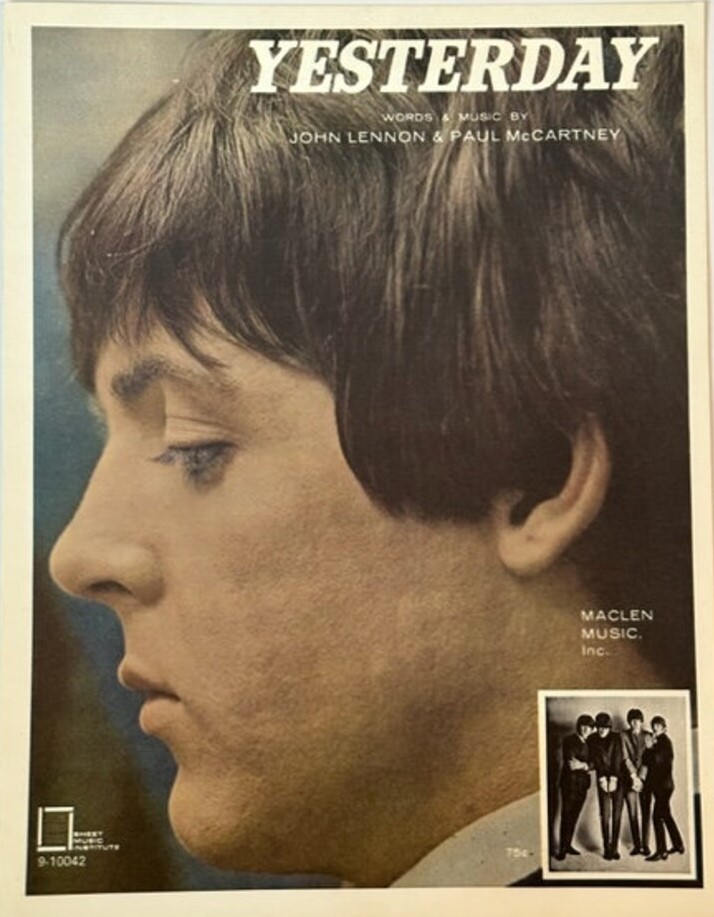 The topic of songs recorded by The Beatles earlier in their career was quite predictable...love. They would be as creative as they could think of with this subject, such as professing their love to someone ("All My Loving"), the heartbreak of being dumped by someone ("Yesterday"), replacing one love interest with another ("Another Girl"), encouraging a friend to rekindle his relationship with a former love interest ("She Loves You"), and even threatening to steal a love interest from someone ("You're Going To Lose That Girl"). These are only a few examples but, nonetheless, the general subject of "love" permeated their early catalog. The topic of songs recorded by The Beatles earlier in their career was quite predictable...love. They would be as creative as they could think of with this subject, such as professing their love to someone ("All My Loving"), the heartbreak of being dumped by someone ("Yesterday"), replacing one love interest with another ("Another Girl"), encouraging a friend to rekindle his relationship with a former love interest ("She Loves You"), and even threatening to steal a love interest from someone ("You're Going To Lose That Girl"). These are only a few examples but, nonetheless, the general subject of "love" permeated their early catalog.
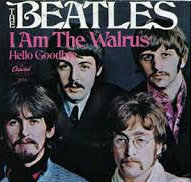 As their songwriting matured, however, the door to subject matters used in their compositions was thrown completely open. Songs about novelists (“Paperback Writer”), marijuana (“Got To Get You Into My Life”), Eastern spiritual beliefs (“Within You Without You”), murderers (“Maxwell's Silver Hammer”) and even songs about nothing at all (“I Am The Walrus”) were becoming commonplace on Beatles records as time progressed. As their songwriting matured, however, the door to subject matters used in their compositions was thrown completely open. Songs about novelists (“Paperback Writer”), marijuana (“Got To Get You Into My Life”), Eastern spiritual beliefs (“Within You Without You”), murderers (“Maxwell's Silver Hammer”) and even songs about nothing at all (“I Am The Walrus”) were becoming commonplace on Beatles records as time progressed.
So would it be strange for Paul McCartney to write a song addressed to his three-year-old sheepdog? I think not!
Songwriting History
"I just started thinking about some words with a tune," Paul remembers. "I don't ever write a song thinking, 'Now, I'll write a song about...' I do, sometimes, but mainly, I don't. I'm doing a tune and then some words come into my head and these happened to be 'Martha my dear,' you know, 'spend my days in conversation.' It doesn't mean anything, you know, those words just happened to come into my head. You see, this is what this song is all about, this song is about my dog, but I don't particularly want her to remember me...So you can read anything you like into it, but really it's just a song. It's me singing to my dog."
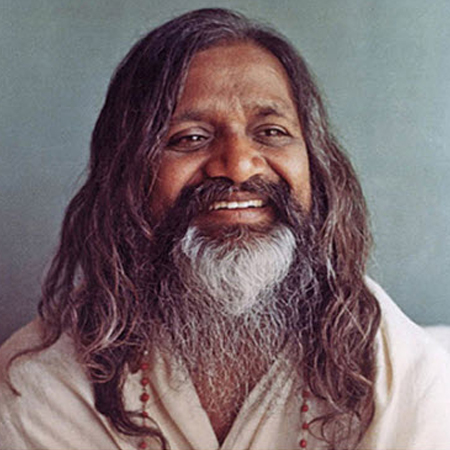 Paul's book “Many Years From Now” stipulates that the song was written in October of 1968, dispite the fact that Paul listed the song titles "Martha My Dear" and "Silly Girl" among other songwriting ideas in a notebook that dates back to the spring of 1968 when The Beatles were in India studying Transcendental Meditation with the Maharishi. No lyrics for these songs were written in this notebook, however, which indicate these listings as being song title ideas only. Since nothing with these titles was demoed at George's 'Kinfauns' house in May of 1968, as many other McCartney compositions were, it appears that Paul figured out a way of combining both song title ideas into a song by October of that year. Paul's book “Many Years From Now” stipulates that the song was written in October of 1968, dispite the fact that Paul listed the song titles "Martha My Dear" and "Silly Girl" among other songwriting ideas in a notebook that dates back to the spring of 1968 when The Beatles were in India studying Transcendental Meditation with the Maharishi. No lyrics for these songs were written in this notebook, however, which indicate these listings as being song title ideas only. Since nothing with these titles was demoed at George's 'Kinfauns' house in May of 1968, as many other McCartney compositions were, it appears that Paul figured out a way of combining both song title ideas into a song by October of that year.
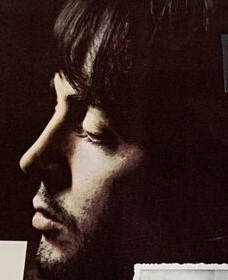 In "Many Years From Now," Paul elaborates further about the song's initial formation. “When I taught myself piano I liked to see how far I could go, and this started life almost as a piece you'd learn as a piano lesson. It's quite hard for me to play, it's a two-handed thing, like a little set piece. In fact I remember one or two people being surprised that I'd played it because it's slightly above my level of competence really, but I wrote it as that, something a bit more complex for me to play. Then while I was blocking out words – you just mouth out sounds and some things come – I found the words 'Martha my dear.'" In "Many Years From Now," Paul elaborates further about the song's initial formation. “When I taught myself piano I liked to see how far I could go, and this started life almost as a piece you'd learn as a piano lesson. It's quite hard for me to play, it's a two-handed thing, like a little set piece. In fact I remember one or two people being surprised that I'd played it because it's slightly above my level of competence really, but I wrote it as that, something a bit more complex for me to play. Then while I was blocking out words – you just mouth out sounds and some things come – I found the words 'Martha my dear.'"
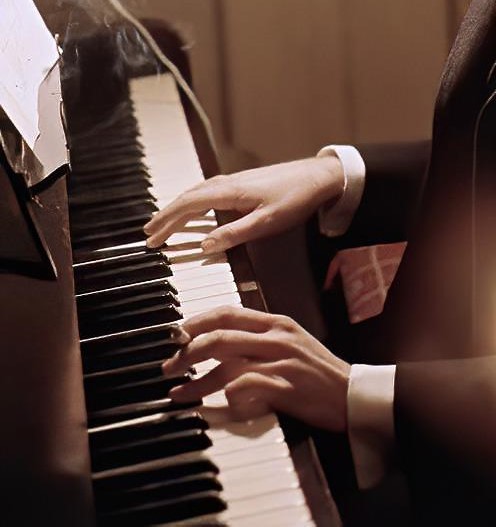 Paul related in 2003 about his piano work as evidenced within the Beatles catalog: "Generally, I played just a kind of chords and bass line accompaniment, which was all we needed, because we were always going to be singing over the top of it. You didn't want to get too much in the way, so you could then put all the flurries and the melody and the words on top. The cleverest I ever got was with 'Martha My Dear,' which was actually a contrapuntal little thing that I taught myself. I forced myself to learn to do two parts at once." Paul related in 2003 about his piano work as evidenced within the Beatles catalog: "Generally, I played just a kind of chords and bass line accompaniment, which was all we needed, because we were always going to be singing over the top of it. You didn't want to get too much in the way, so you could then put all the flurries and the melody and the words on top. The cleverest I ever got was with 'Martha My Dear,' which was actually a contrapuntal little thing that I taught myself. I forced myself to learn to do two parts at once."
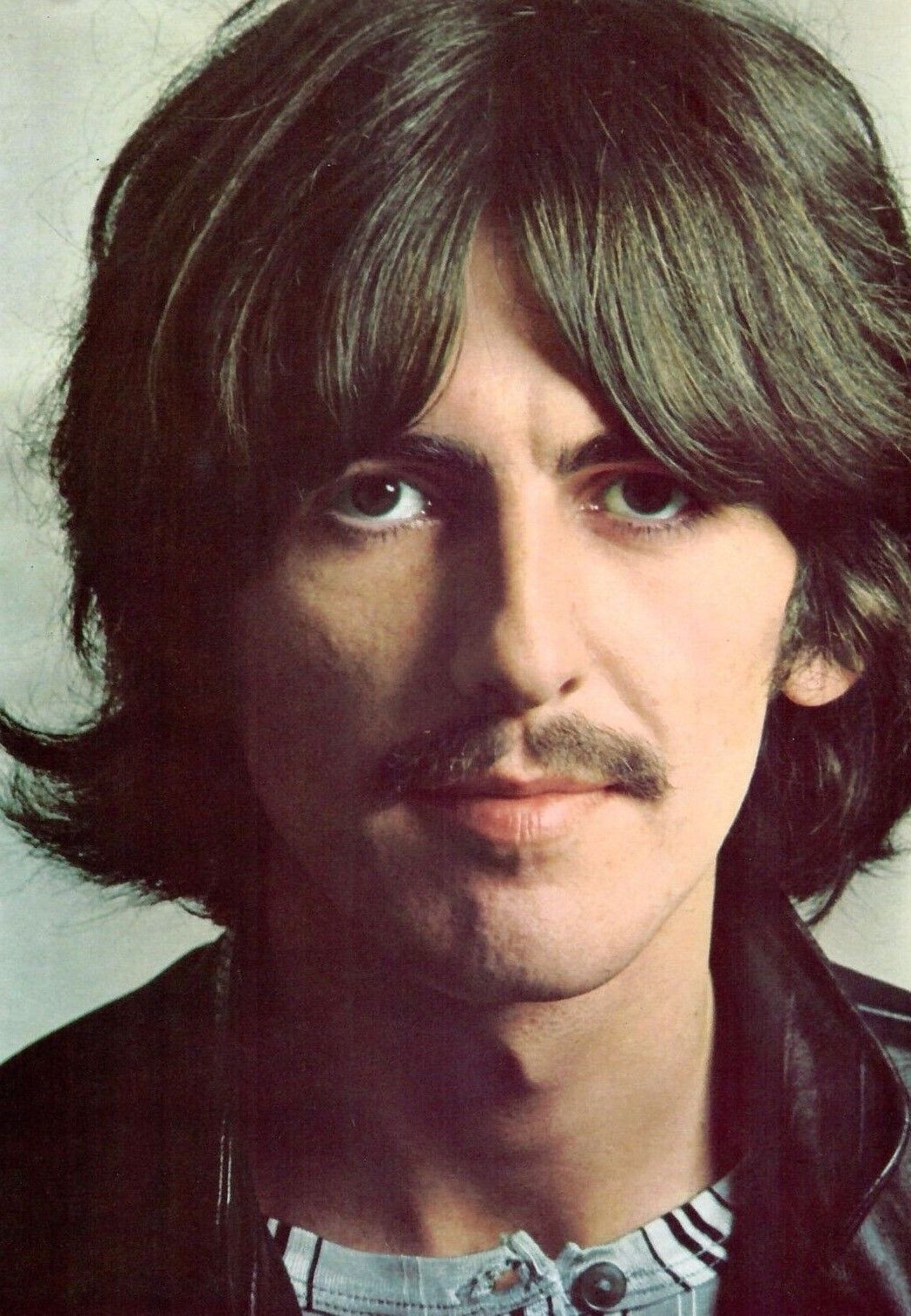 In "Many Yers From Now," Paul continues: "So I made up another fantasy song. I remember George Harrison once said to me, 'I could never write songs like that. You just make 'em up, they don't mean anything to you.' I think on a deep level they do mean something to me but on a surface level they are often fantasy like Desmond and Molly or Martha my dear. I mean, I'm not really speaking to Martha, it's a communication of some sort of affection but in a slightly abstract way – 'You silly girl, look what you've done,' all that sort of stuff. These songs grow. Whereas it would appear to anybody else to be a song to a girl called Martha, it's actually a dog, and our relationship was platonic, believe me!” In "Many Yers From Now," Paul continues: "So I made up another fantasy song. I remember George Harrison once said to me, 'I could never write songs like that. You just make 'em up, they don't mean anything to you.' I think on a deep level they do mean something to me but on a surface level they are often fantasy like Desmond and Molly or Martha my dear. I mean, I'm not really speaking to Martha, it's a communication of some sort of affection but in a slightly abstract way – 'You silly girl, look what you've done,' all that sort of stuff. These songs grow. Whereas it would appear to anybody else to be a song to a girl called Martha, it's actually a dog, and our relationship was platonic, believe me!”
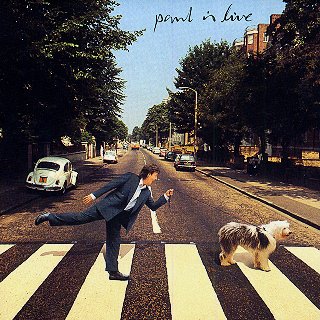 Regarding his cherished Old English sheepdog, which he bought just after moving into his North London home in the summer of 1966, Paul has stated: “Martha was my first ever pet. I never had a dog or a cat at home. She was a dear pet of mine. I remember John being amazed to see me being so loving to an animal. He said, 'I've never seen you like that before.' I've since thought, you know, he wouldn't have. It's only when you're cuddling around with a dog that you're in that mode. And she was a very cuddly dog.” In his book "The Lyrics," Paul describes Martha as "a lovely little dog. I just adored her. One of the unlikely side effects was that John became very sympathetic towards me. When he came 'round and saw me playing with Martha, I could tell that he liked her. John was a very guarded person, which was parly where all his wit came from. He'd had a very difficult upbringing...Seeing me with Martha, with my guard down, all of a sudden he started warming to me. And so he let his guard down too." Martha finally passed away in 1981 at 15 years of age, one of her offspring, named Arrow, is featured on the cover of Paul's album “Paul Is Live.” Regarding his cherished Old English sheepdog, which he bought just after moving into his North London home in the summer of 1966, Paul has stated: “Martha was my first ever pet. I never had a dog or a cat at home. She was a dear pet of mine. I remember John being amazed to see me being so loving to an animal. He said, 'I've never seen you like that before.' I've since thought, you know, he wouldn't have. It's only when you're cuddling around with a dog that you're in that mode. And she was a very cuddly dog.” In his book "The Lyrics," Paul describes Martha as "a lovely little dog. I just adored her. One of the unlikely side effects was that John became very sympathetic towards me. When he came 'round and saw me playing with Martha, I could tell that he liked her. John was a very guarded person, which was parly where all his wit came from. He'd had a very difficult upbringing...Seeing me with Martha, with my guard down, all of a sudden he started warming to me. And so he let his guard down too." Martha finally passed away in 1981 at 15 years of age, one of her offspring, named Arrow, is featured on the cover of Paul's album “Paul Is Live.”
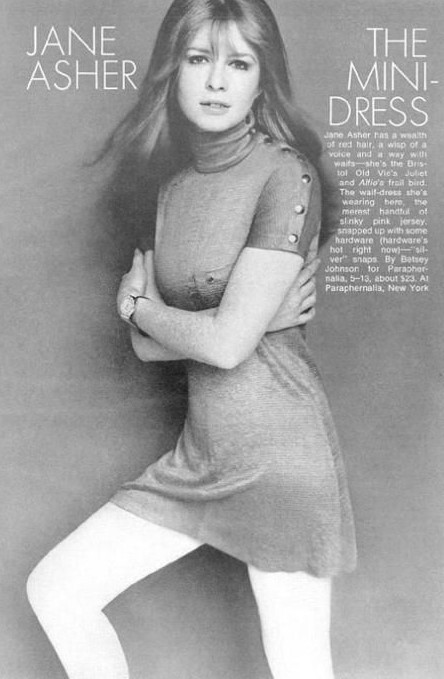 While some of the lyrics can easily be attributed to someone addressing their pet, such as “hold your head up, you silly girl, look what you've done” and “hold your hand out,” the remainder of the lyrics appear to be Paul addressing a former love interest who he viewed as a "muse" of sorts. Many have speculated that he was addressing his longtime girlfriend Jane Asher who had recently called off their engagement because of Paul's infidelity. “You have always been my inspiration,” Paul states, which is thought to refer to the many songs Paul had written with her in mind (“All My Loving,” “We Can Work It Out” and “You Won't See Me” being a few). Lines such as “don't forget me,” “be good to me,” and “you're bound to see that you and me were meant to be for each other” could easily lead one to think that Jane was being addressed here. Paul has never confirmed this. But since Paul has stated concerning the lyrics that "on a deep level they do mean something to me," maybe he subconsciously did write the song with Jane in mind. Who can know? While some of the lyrics can easily be attributed to someone addressing their pet, such as “hold your head up, you silly girl, look what you've done” and “hold your hand out,” the remainder of the lyrics appear to be Paul addressing a former love interest who he viewed as a "muse" of sorts. Many have speculated that he was addressing his longtime girlfriend Jane Asher who had recently called off their engagement because of Paul's infidelity. “You have always been my inspiration,” Paul states, which is thought to refer to the many songs Paul had written with her in mind (“All My Loving,” “We Can Work It Out” and “You Won't See Me” being a few). Lines such as “don't forget me,” “be good to me,” and “you're bound to see that you and me were meant to be for each other” could easily lead one to think that Jane was being addressed here. Paul has never confirmed this. But since Paul has stated concerning the lyrics that "on a deep level they do mean something to me," maybe he subconsciously did write the song with Jane in mind. Who can know?
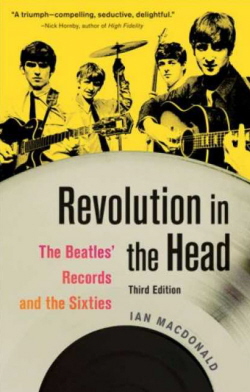 Ian MacDonald, in his book “Revolution In The Head,” makes a very interesting observation which he proposes could very well have been a musical inspiration for the song. "McCartney's most rhythmically unorthodox song, 'Martha My Dear,' was recorded ten days after a period of intense rehearsal work on Lennon's similarly irregular 'Happiness Is A Warm Gun.' Since, like 'Happiness,' it includes an ascending bass phrase which temporarily expands the meter (fourth bar: 6/4), it's possible that McCartney, his musical funnybone tickled by his partner's eccentricities, here set out to create something equally tricky for his own amusement." Ian MacDonald, in his book “Revolution In The Head,” makes a very interesting observation which he proposes could very well have been a musical inspiration for the song. "McCartney's most rhythmically unorthodox song, 'Martha My Dear,' was recorded ten days after a period of intense rehearsal work on Lennon's similarly irregular 'Happiness Is A Warm Gun.' Since, like 'Happiness,' it includes an ascending bass phrase which temporarily expands the meter (fourth bar: 6/4), it's possible that McCartney, his musical funnybone tickled by his partner's eccentricities, here set out to create something equally tricky for his own amusement."
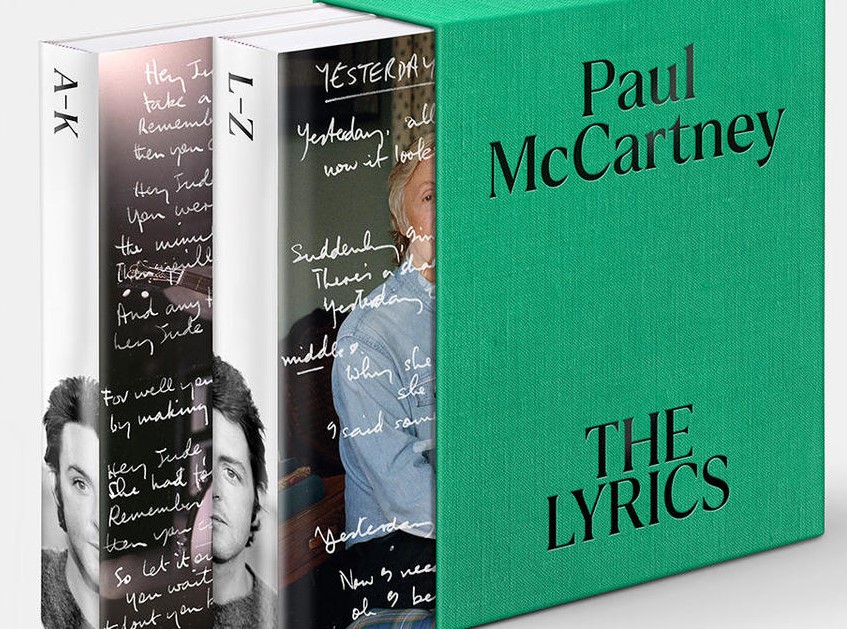 An interesting revelation concerning the meaning of these lyrics are contained in Paul's 2021 book "The Lyrics." "The funny thing is, at the time almost no one listening to the song knew that Martha was a dog. And actually, as the song proceeds, Martha morphs into a person. As it happens, I had a relative who was having an affair and came down to London to tell me about it. Maybe for some hand-holding. If you think about it, by 1968 I represented a breath of freedom. I was now slightly outside the circle. This relative could confide in me in a way that maybe wouldn't have been possible with other members of a gossipy Liverpool family. I'm the only person who knew the song was about someone having an affair, and that gives a line like 'When you find yourself in the think of it' an added layer of poignancy." An interesting revelation concerning the meaning of these lyrics are contained in Paul's 2021 book "The Lyrics." "The funny thing is, at the time almost no one listening to the song knew that Martha was a dog. And actually, as the song proceeds, Martha morphs into a person. As it happens, I had a relative who was having an affair and came down to London to tell me about it. Maybe for some hand-holding. If you think about it, by 1968 I represented a breath of freedom. I was now slightly outside the circle. This relative could confide in me in a way that maybe wouldn't have been possible with other members of a gossipy Liverpool family. I'm the only person who knew the song was about someone having an affair, and that gives a line like 'When you find yourself in the think of it' an added layer of poignancy."
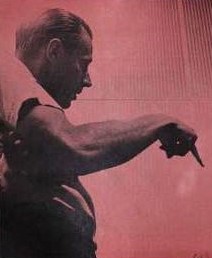 This notwithstanding, “Martha My Dear” has been documented as being written by Paul alone in October of 1968 while the song began being recorded on October 4th of that year. It was therefore recorded almost immediately after it was written, George Martin having already written an orchestral score for the song that was also recorded on this same day, undoubtedly from a demo tape that Paul must have provided to him in advance. With inspiration at a very high level, and with the deadline for the finished album looming very near, all involved worked quite fast to get this song "in the can." This notwithstanding, “Martha My Dear” has been documented as being written by Paul alone in October of 1968 while the song began being recorded on October 4th of that year. It was therefore recorded almost immediately after it was written, George Martin having already written an orchestral score for the song that was also recorded on this same day, undoubtedly from a demo tape that Paul must have provided to him in advance. With inspiration at a very high level, and with the deadline for the finished album looming very near, all involved worked quite fast to get this song "in the can."
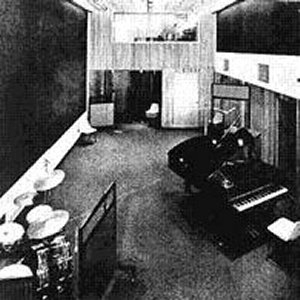
Trident Studios
Recording History
As mentioned above, it is assumed that Paul recorded a demo of the song for George Martin to use in creating the orchestral score that was recorded in the studio, although this demo has not surfaced anywhere. This demo recording, if it exists, must have been recorded in the first couple of days of October, 1968.
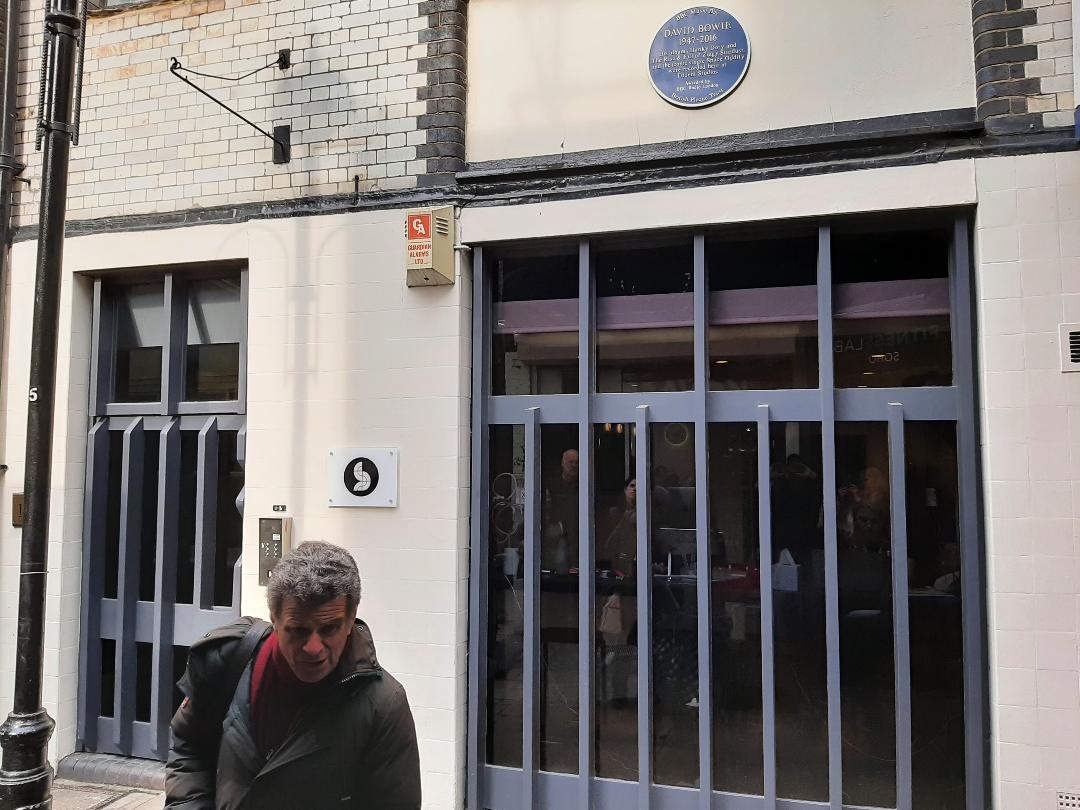 Then, on October 4th, 1968, Paul, Ringo and George Harrison entered Trident Studios in London at 4 pm to begin working on the song. The rhythm track was recorded first, the instrumentation being Paul on piano (track seven) and lead vocals (track five), with both George on electric guitar and Ringo on drums together on track six of the eight-track tape. Assistant Mal Evans, in "The Beatles Book Monthly," wrote that "Ringo bashed a hole in his brand new bass drum skin the night we started this track," which was undoubtedly replaced shortly thereafter. They may have run though it a few times without the tapes rolling but, in the end, this rhythm track was recorded in one take. This was complete by 6 pm in time for studio musicians to enter to record the score for Paul's previously recorded rhythm track for the song “Honey Pie.” Then, on October 4th, 1968, Paul, Ringo and George Harrison entered Trident Studios in London at 4 pm to begin working on the song. The rhythm track was recorded first, the instrumentation being Paul on piano (track seven) and lead vocals (track five), with both George on electric guitar and Ringo on drums together on track six of the eight-track tape. Assistant Mal Evans, in "The Beatles Book Monthly," wrote that "Ringo bashed a hole in his brand new bass drum skin the night we started this track," which was undoubtedly replaced shortly thereafter. They may have run though it a few times without the tapes rolling but, in the end, this rhythm track was recorded in one take. This was complete by 6 pm in time for studio musicians to enter to record the score for Paul's previously recorded rhythm track for the song “Honey Pie.”
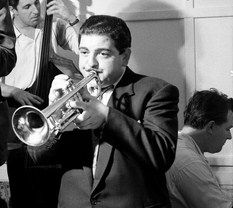 Then, after this group of studio musicians left, another set entered, 14 in number, to record the orchestral score that George Martin had recently prepared for “Martha My Dear.” As the above photographic evidence suggests, these musicians recorded their parts in two shifts; six brass musicians with Paul and George guiding them on their instruments, and then eight string musicians recorded their part afterward. As for the first shift, the trumpets and horns were recorded on track three, while the trombones and tuba were on track four. The second shift then had the performance of all the string players put on track eight of the tape. By midnight, these overdubs were complete, musician Leon Calvert contributing both a trumpet and flugelhorn part in this arrangement. Then, after this group of studio musicians left, another set entered, 14 in number, to record the orchestral score that George Martin had recently prepared for “Martha My Dear.” As the above photographic evidence suggests, these musicians recorded their parts in two shifts; six brass musicians with Paul and George guiding them on their instruments, and then eight string musicians recorded their part afterward. As for the first shift, the trumpets and horns were recorded on track three, while the trombones and tuba were on track four. The second shift then had the performance of all the string players put on track eight of the tape. By midnight, these overdubs were complete, musician Leon Calvert contributing both a trumpet and flugelhorn part in this arrangement.
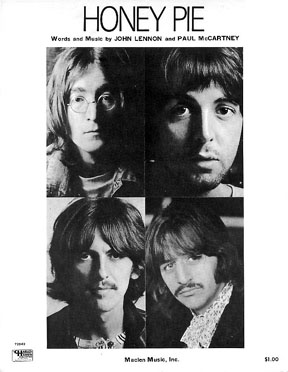 As we see, this was a very productive day in the studio. However, it still continued. Paul kept producer George Martin and engineer Barry Sheffield in the control room so that he could record more overdubs, this taking the session to 4:30 am the following morning. Paul re-recorded his lead vocals on track five of “Martha My Dear,” erasing the vocals he performed during the rhythm track, adding handclaps during the instrumental section of the song. He then double-tracked both the vocals and handclaps onto track two of the tape. After a quick vocal overdub onto “Honey Pie,” the session finally ended in the wee hours of the monring. As we see, this was a very productive day in the studio. However, it still continued. Paul kept producer George Martin and engineer Barry Sheffield in the control room so that he could record more overdubs, this taking the session to 4:30 am the following morning. Paul re-recorded his lead vocals on track five of “Martha My Dear,” erasing the vocals he performed during the rhythm track, adding handclaps during the instrumental section of the song. He then double-tracked both the vocals and handclaps onto track two of the tape. After a quick vocal overdub onto “Honey Pie,” the session finally ended in the wee hours of the monring.
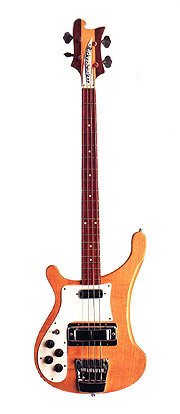 Later that day, October 5th, 1968, another session at Trident Studios began at around 6 pm with at least Paul and George Harrison present, George overdubbing some vocals onto his previously recorded song “Savoy Truffle” on this day. After this was done, Paul took to overdubbing more onto “Martha My Dear,” this being his masterful bass guitar part, which was undoubtedly recorded onto track one of the tape. Mark Lewisohn, in his book "The Beatles Recording Sessions" suggests that Paul also recorded an electric guitar part for the song at this time. Since we know George was also present on this day, it could have been either Beatle. Nonetheless, since both Ringo's drums and George's guitar were mixed together onto the same track when the rhythm track was recorded on the previous day, we know for sure that George is indeed heard on the finished recording, although a guitar part from Paul may also be in the mix somewhere. This completed the recording of "Martha My Dear," resulting in George Martin and Barry Sheffield creating both a mono and stereo mix of the song, only one attempt needed to create each of these. After mixes of a couple other songs were created, this session ended at around 1 am the following morning. Later that day, October 5th, 1968, another session at Trident Studios began at around 6 pm with at least Paul and George Harrison present, George overdubbing some vocals onto his previously recorded song “Savoy Truffle” on this day. After this was done, Paul took to overdubbing more onto “Martha My Dear,” this being his masterful bass guitar part, which was undoubtedly recorded onto track one of the tape. Mark Lewisohn, in his book "The Beatles Recording Sessions" suggests that Paul also recorded an electric guitar part for the song at this time. Since we know George was also present on this day, it could have been either Beatle. Nonetheless, since both Ringo's drums and George's guitar were mixed together onto the same track when the rhythm track was recorded on the previous day, we know for sure that George is indeed heard on the finished recording, although a guitar part from Paul may also be in the mix somewhere. This completed the recording of "Martha My Dear," resulting in George Martin and Barry Sheffield creating both a mono and stereo mix of the song, only one attempt needed to create each of these. After mixes of a couple other songs were created, this session ended at around 1 am the following morning.
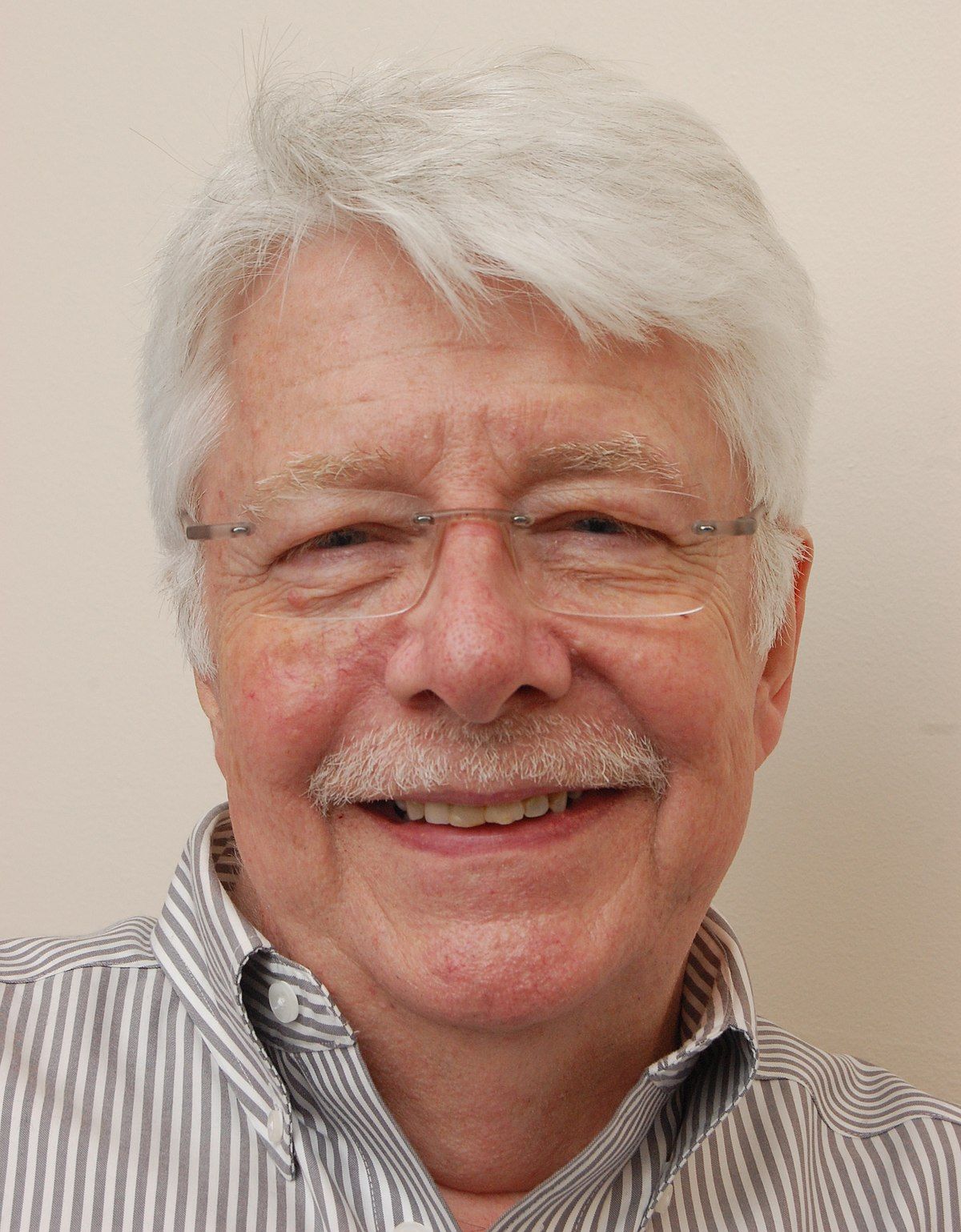 On October 7th, 1968, tape copies of both the mono and stereo mixes of the song were made in EMI Studio Two by George Martin and engineers Ken Scott and Mike Sheady. These copies were necessary into order to convert the Trident recordings made with the American NAB equalization to the UK standard of CCIR. At this point, the song was ready for release on both the mono and stereo versions of the “White Album.” On October 7th, 1968, tape copies of both the mono and stereo mixes of the song were made in EMI Studio Two by George Martin and engineers Ken Scott and Mike Sheady. These copies were necessary into order to convert the Trident recordings made with the American NAB equalization to the UK standard of CCIR. At this point, the song was ready for release on both the mono and stereo versions of the “White Album.”
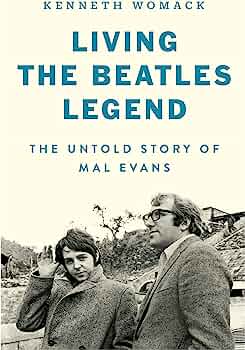 In January of 1969, during the sessions that became the “Let It Be” album, Paul would tinker around with the song on the piano, this being done three times: twice at Twickenham Film Studios (January 10th and 14th) and once at Apple Studios (January 25th). January 10th, 1969, happened to be the day that George walked out of the sessions and threatened to quit The Beatles. Kenneth Womack's book "Living The Beatles Legend: The Untold Story Of Mal Evans" writes about this day: "As if to underscore the malaise that greeted George's absence, that day's session ended with a cacophony of improvised jamming, including a strained rendition of the 'White Album's' 'Martha My Dear' during which Yoko provided a screeching solo, yelling John's name over and over. Meanwhile, Paul simply played on, seemingly unfazed by the choas around him." In January of 1969, during the sessions that became the “Let It Be” album, Paul would tinker around with the song on the piano, this being done three times: twice at Twickenham Film Studios (January 10th and 14th) and once at Apple Studios (January 25th). January 10th, 1969, happened to be the day that George walked out of the sessions and threatened to quit The Beatles. Kenneth Womack's book "Living The Beatles Legend: The Untold Story Of Mal Evans" writes about this day: "As if to underscore the malaise that greeted George's absence, that day's session ended with a cacophony of improvised jamming, including a strained rendition of the 'White Album's' 'Martha My Dear' during which Yoko provided a screeching solo, yelling John's name over and over. Meanwhile, Paul simply played on, seemingly unfazed by the choas around him."
 The only other known time the song was committed to tape by Paul was briefly during a sound check on April 28th, 2015 at the Budokan in Tokyo during his “Out There” tour. A bootleg recording of this snippet of the introduction of “Martha My Dear” has surfaced, showing that Paul indeed needed to brush up on his ability to play the piece. As he stated above: “It's quite hard for me to play." The only other known time the song was committed to tape by Paul was briefly during a sound check on April 28th, 2015 at the Budokan in Tokyo during his “Out There” tour. A bootleg recording of this snippet of the introduction of “Martha My Dear” has surfaced, showing that Paul indeed needed to brush up on his ability to play the piece. As he stated above: “It's quite hard for me to play."
 Sometime in 2018, George Martin's son Giles Martin, along with engineer Sam Okell, returned to the master tape in order to prepare a vibrant new stereo mix of the song for inclusion on the various editions of the 50th Anniversary "White Album" releases. They also created an interesting stereo mix of tracks five, six and seven of the master tape, which omited the brass and strings as we're used to hearing. Sometime in 2018, George Martin's son Giles Martin, along with engineer Sam Okell, returned to the master tape in order to prepare a vibrant new stereo mix of the song for inclusion on the various editions of the 50th Anniversary "White Album" releases. They also created an interesting stereo mix of tracks five, six and seven of the master tape, which omited the brass and strings as we're used to hearing.
Song Structure and Style
And no wonder it was so hard for Paul to play. The time signature changes are quite complicated and difficult to decipher, different sheet music sources describing them in different configurations. One explanation is presented below, one which I feel is uniform and easiest to grasp.
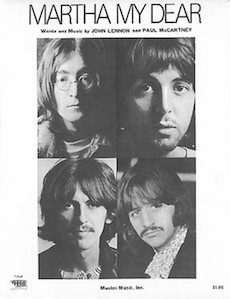 Before we delve into that, the overall structure of the song should be gone over, which is 'verse (intro)/ verse/ bridge one/ bridge two/ verse (instrumental)/ bridge one/ verse' (or aabcaba). At the end of the song we hear Paul play a simple descending overdubbed bass line seemingly as an afterthought, which could be considered as a brief conclusion to the song. Before we delve into that, the overall structure of the song should be gone over, which is 'verse (intro)/ verse/ bridge one/ bridge two/ verse (instrumental)/ bridge one/ verse' (or aabcaba). At the end of the song we hear Paul play a simple descending overdubbed bass line seemingly as an afterthought, which could be considered as a brief conclusion to the song.
The first introductory verse is eight measures long and is played entirely by Paul on the piano, this being the only element heard in this verse. The time signature changes can be parsed out like this: the first measure is in 3/4 time, the second measure is in 2/4 time, and the rest are in a standard 4/4 time.
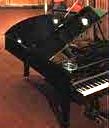 The second verse, which is the first vocal verse, is also eight measures long and contains the same time signature changes. We can more readily explain when the different changes occur in this verse by indicating which lyrics are sung. The first measure, which is in 3/4 time, comprises the lyrics “Martha my dear,” while the second measure, which is in 2/4 time, encompasses the lyrics “though I spend my.” The remainder of the verse is in 4/4 just as the initial instrumental verse was. Paul's piano, while still faintly heard in the background, is engulfed by the string arrangement which mimics perfectly Paul's piano work from the previous verse. Paul's vocals are also of prime focus here, being double-tracked for a nice thick sound. The second verse, which is the first vocal verse, is also eight measures long and contains the same time signature changes. We can more readily explain when the different changes occur in this verse by indicating which lyrics are sung. The first measure, which is in 3/4 time, comprises the lyrics “Martha my dear,” while the second measure, which is in 2/4 time, encompasses the lyrics “though I spend my.” The remainder of the verse is in 4/4 just as the initial instrumental verse was. Paul's piano, while still faintly heard in the background, is engulfed by the string arrangement which mimics perfectly Paul's piano work from the previous verse. Paul's vocals are also of prime focus here, being double-tracked for a nice thick sound.
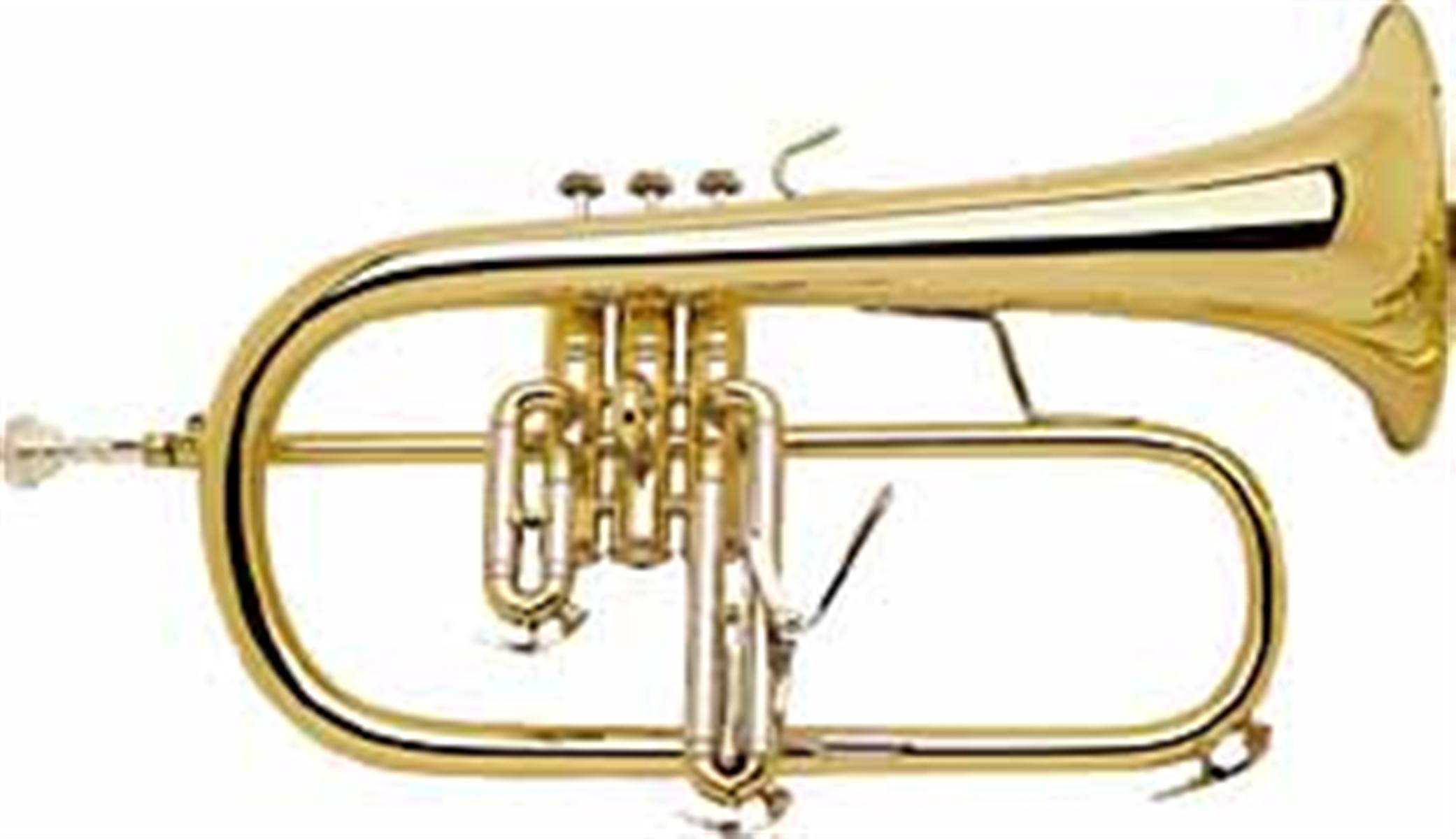 Then we push forward into the first bridge, which is eight measures long, all measures being in 4/4 time. Paul's double-tracked vocals are in the forefront here as well with his piano work buried because of the fine orchestral score. The strings play staccato eighth notes while the tuba and trombone highlight the quarter notes throughout most of these measures. Leon Calvert's flugelhorn makes an appearance during the instrumental break in the eighth measure while Paul's vocals transition into the section of the song that follows. Then we push forward into the first bridge, which is eight measures long, all measures being in 4/4 time. Paul's double-tracked vocals are in the forefront here as well with his piano work buried because of the fine orchestral score. The strings play staccato eighth notes while the tuba and trombone highlight the quarter notes throughout most of these measures. Leon Calvert's flugelhorn makes an appearance during the instrumental break in the eighth measure while Paul's vocals transition into the section of the song that follows.
This next section we refer to as “bridge two” because it's much different from the previous section of the song, which we refer to as “bridge one,” but it still acts as a "bridge" back to another verse which follows immediately afterwards. "Bridge two” is nine measures long and also features some rather tricky time signature changes. The first measure is in 2/4 (“good look a-”), the second measure is in 4/4 (“-round you, take a”), the third measure is back to 2/4 (“good look, you're”) and the fourth measure returns to 4/4 (“bound to see, that”). Measures five through eight are also in 4/4 time while the final ninth measure is in 2/4, this consisting of a three note instrumental segue into the verse that follows.
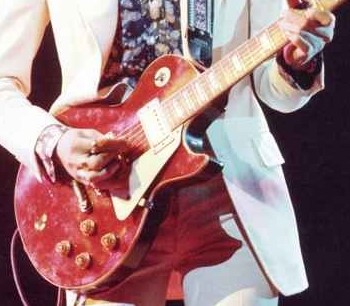 Instrumentally, “bridge two” adds some more familiar musical elements for Beatles songs, these being drums and electric rhythm guitar. In order to encompass the changing time signatures Ringo plays what amounts to a 2/4 polka-style drum beat throughout the first seven measures, stopping in measure eight and then playing a nice drum fill in the final measure. George's guitar plays quarter-note rhythm guitar chops throughout the first seven measures, with the exception of the sixth measure where it plays a triplet-like pattern, and the eighth measure where a strummed chord rings out during the break, this break also featuring the flugelhorn riff heard in “bridge one.” Horns play background chords during the first six measures of “bridge two,” strings briefly joining in on the sixth measure with more striking staccato eighth-notes. The tuba and trombone also enter the fray in measure seven for the low end but trail off in measure eight. The horns then kick in for the final three segue notes in the final measure. Instrumentally, “bridge two” adds some more familiar musical elements for Beatles songs, these being drums and electric rhythm guitar. In order to encompass the changing time signatures Ringo plays what amounts to a 2/4 polka-style drum beat throughout the first seven measures, stopping in measure eight and then playing a nice drum fill in the final measure. George's guitar plays quarter-note rhythm guitar chops throughout the first seven measures, with the exception of the sixth measure where it plays a triplet-like pattern, and the eighth measure where a strummed chord rings out during the break, this break also featuring the flugelhorn riff heard in “bridge one.” Horns play background chords during the first six measures of “bridge two,” strings briefly joining in on the sixth measure with more striking staccato eighth-notes. The tuba and trombone also enter the fray in measure seven for the low end but trail off in measure eight. The horns then kick in for the final three segue notes in the final measure.
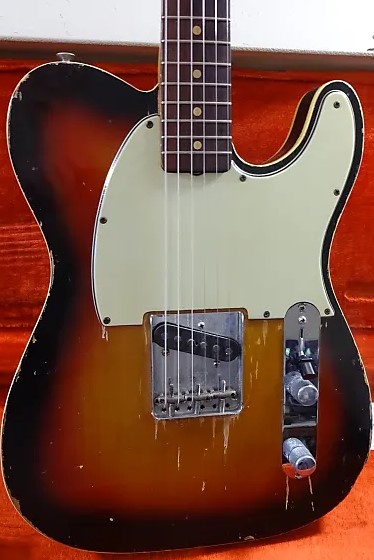 Next heard is an instrumental verse which is quite similar to the arrangement heard in the first vocal verse, the main difference being the strident horns taking the place of Paul's vocals. The drums are not heard here, the percussive end being handled by Paul's handclaps, double-tracked by him during his lead vocal overdub as his Fender Esquire electric guitar is still present here, all adding a nice full touch to the masterful arrangement. The drums do appear, however, at the very end of the final measure with a quick snare drum flam. Next heard is an instrumental verse which is quite similar to the arrangement heard in the first vocal verse, the main difference being the strident horns taking the place of Paul's vocals. The drums are not heard here, the percussive end being handled by Paul's handclaps, double-tracked by him during his lead vocal overdub as his Fender Esquire electric guitar is still present here, all adding a nice full touch to the masterful arrangement. The drums do appear, however, at the very end of the final measure with a quick snare drum flam.
A repeat of “bridge one” is heard next, which is instrumentally quite similar to its first occurrence except for a high note held out by a trumpet for the first four measures and a simple 4/4 drum beat which culminates in a fill in the final measure, the drums' final appearance in the song.
 The final verse appears next which, apart from minor changes in lyrics, is virtually the same instrumentally as the first vocal verse of the song. One difference, however, is Paul's overdubbed bass guitar which virtually follows the low end string part note for note. Paul then adds the final touch by descending the scale by himself on bass while the strings hold out the final note of George Martin's score. The final verse appears next which, apart from minor changes in lyrics, is virtually the same instrumentally as the first vocal verse of the song. One difference, however, is Paul's overdubbed bass guitar which virtually follows the low end string part note for note. Paul then adds the final touch by descending the scale by himself on bass while the strings hold out the final note of George Martin's score.
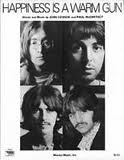 Paul may have been inspired to write “Martha My Dear” after working with The Beatles at mastering the changing time signatures of John's “Happiness Is A Warm Gun” as some suggest, but what resulted is a true jewel in both McCartney's early career as well as the “White Album.” Paul laid down the template for the song on piano, the classically trained instrumentalists using this to interpret his brainchild perfectly. George and Ringo's contributions are rudimentary and strictly laid out, Paul adding bass and an additional guitar to the arrangement which set a precedent for what he truly was capable of as a future solo artist. Most of all, Paul loved being a Beatle and fought tooth and nail to keep the band together as a workable unit. When that did eventually fail, “Martha My Dear” is testimony to what his future would hold. After the initial shock wore off, that is. Paul may have been inspired to write “Martha My Dear” after working with The Beatles at mastering the changing time signatures of John's “Happiness Is A Warm Gun” as some suggest, but what resulted is a true jewel in both McCartney's early career as well as the “White Album.” Paul laid down the template for the song on piano, the classically trained instrumentalists using this to interpret his brainchild perfectly. George and Ringo's contributions are rudimentary and strictly laid out, Paul adding bass and an additional guitar to the arrangement which set a precedent for what he truly was capable of as a future solo artist. Most of all, Paul loved being a Beatle and fought tooth and nail to keep the band together as a workable unit. When that did eventually fail, “Martha My Dear” is testimony to what his future would hold. After the initial shock wore off, that is.
American Releases
The group's double album entitled "The Beatles," affectionately known as the "White Album," was released in the US on November 25th, 1968, "Martha My Dear" being prominently featured as the lead off track of side two. The album's first compact disc release was on August 24th, 1986, then as a 30th Anniversary limited edition CD on November 23rd, 1998, and then as a remastered CD on September 9th, 2009. Since this was the first American Beatles album not available in mono at the initial time of release, the mono vinyl version finally got its release in the US on November 9th, 2014. A vibrant new stereo 50th Anniversary vinyl release came out on November 9th, 2018.
.jpg) Sometime in 1969, Capitol released five volumes of tapes entitled "Playtapes," each one featuring a few songs from the "White Album," the tape "The Beatles Vol. II" featuring "Martha My Dear" as one of the five tracks contained therein. This short-lived format was popular in the later half of the '60s, these tapes being specially manufactured to be played on portable players. These tapes are quite the collectibles today. Sometime in 1969, Capitol released five volumes of tapes entitled "Playtapes," each one featuring a few songs from the "White Album," the tape "The Beatles Vol. II" featuring "Martha My Dear" as one of the five tracks contained therein. This short-lived format was popular in the later half of the '60s, these tapes being specially manufactured to be played on portable players. These tapes are quite the collectibles today.
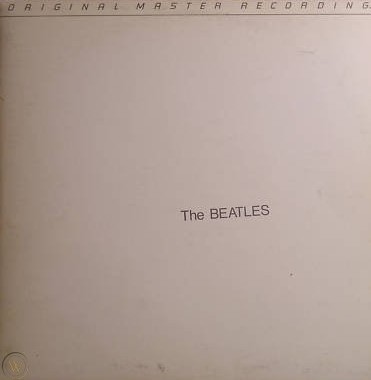 An interesting US vinyl edition of the “White Album” was released on January 7th, 1982, this being manufactured by Mobile Fidelity Sound Lab in Chatsworth, California as part of their "Original Master Recording" series. Their practice was to prepare a new master utilizing half-speed mastering technology from the original master tapes, in this case using the leased sub-master from Capitol Records. This release, which sounded superior to all previous British and American pressings, was packaged in a non-embossed unnumbered cover that did not include the usual poster/lyric sheet or individual Beatles portraits as contained in standard releases. This nonetheless excellent edition of the album was only available for a short time and is quite collectible today. An interesting US vinyl edition of the “White Album” was released on January 7th, 1982, this being manufactured by Mobile Fidelity Sound Lab in Chatsworth, California as part of their "Original Master Recording" series. Their practice was to prepare a new master utilizing half-speed mastering technology from the original master tapes, in this case using the leased sub-master from Capitol Records. This release, which sounded superior to all previous British and American pressings, was packaged in a non-embossed unnumbered cover that did not include the usual poster/lyric sheet or individual Beatles portraits as contained in standard releases. This nonetheless excellent edition of the album was only available for a short time and is quite collectible today.
 The CD box set “The Beatles In Mono” was released on September 9th, 2009, which features the entire mono Beatles catalog. The “White Album” got its first mono release on compact disc within this box set, “Martha My Dear” being included. The vinyl edition of this box set first came out on September 9th, 2014. The CD box set “The Beatles In Mono” was released on September 9th, 2009, which features the entire mono Beatles catalog. The “White Album” got its first mono release on compact disc within this box set, “Martha My Dear” being included. The vinyl edition of this box set first came out on September 9th, 2014.
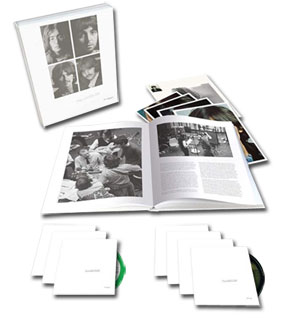 Various editions of the "White Album" were released on November 9th, 2018 to commemorate the 50th Anniversary of its original release. The "Deluxe" edition, which was made available as a 3CD version and a limited edition 180-gram 4LP vinyl set, contained the newly created Giles Martin mix of the "White Album." The "Super Deluxe" 6CD + 1Blu-ray edition also contains the song without brass and strings as heard in the officially released version. Various editions of the "White Album" were released on November 9th, 2018 to commemorate the 50th Anniversary of its original release. The "Deluxe" edition, which was made available as a 3CD version and a limited edition 180-gram 4LP vinyl set, contained the newly created Giles Martin mix of the "White Album." The "Super Deluxe" 6CD + 1Blu-ray edition also contains the song without brass and strings as heard in the officially released version.
Live Performances
The Beatles surely never performed the song live, nor has Paul ever included the song in any set list during his extensive touring days, other than the 2015 sound check in Toyko mentioned above.
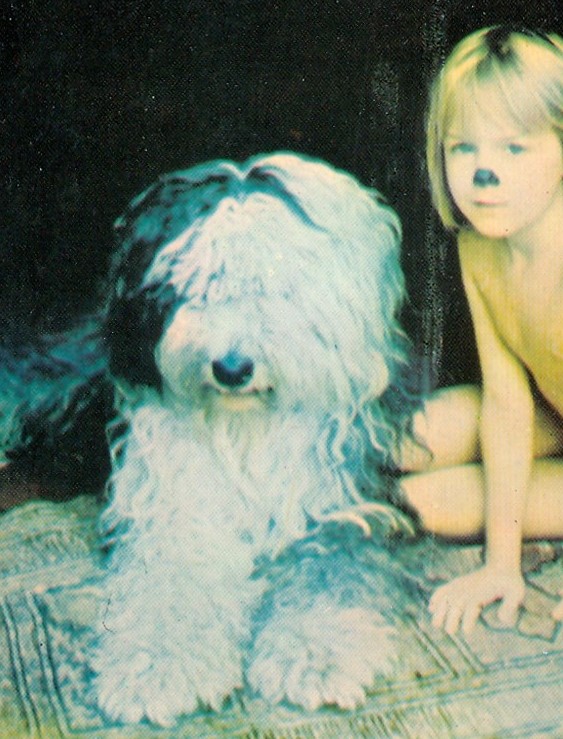
Paul's sheepdog Martha and Linda's daughter Heather from the gatefold cover of the album "McCartney"
Conclusion
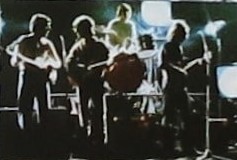 The Beatles began sessions for the "White Album" on May 30th, 1968 and continued in the recording studio without much of a break until October 14th, 1968 when the album was deemed complete. They needed to be finished with this project by this time if they wanted to get it out for the 1968 Christmas season, which was a peak buying time in many parts of the world. The vast majority of the album had been written before the sessions even began, their trip to India resulting in a plethora of newly written songs. The Beatles began sessions for the "White Album" on May 30th, 1968 and continued in the recording studio without much of a break until October 14th, 1968 when the album was deemed complete. They needed to be finished with this project by this time if they wanted to get it out for the 1968 Christmas season, which was a peak buying time in many parts of the world. The vast majority of the album had been written before the sessions even began, their trip to India resulting in a plethora of newly written songs.
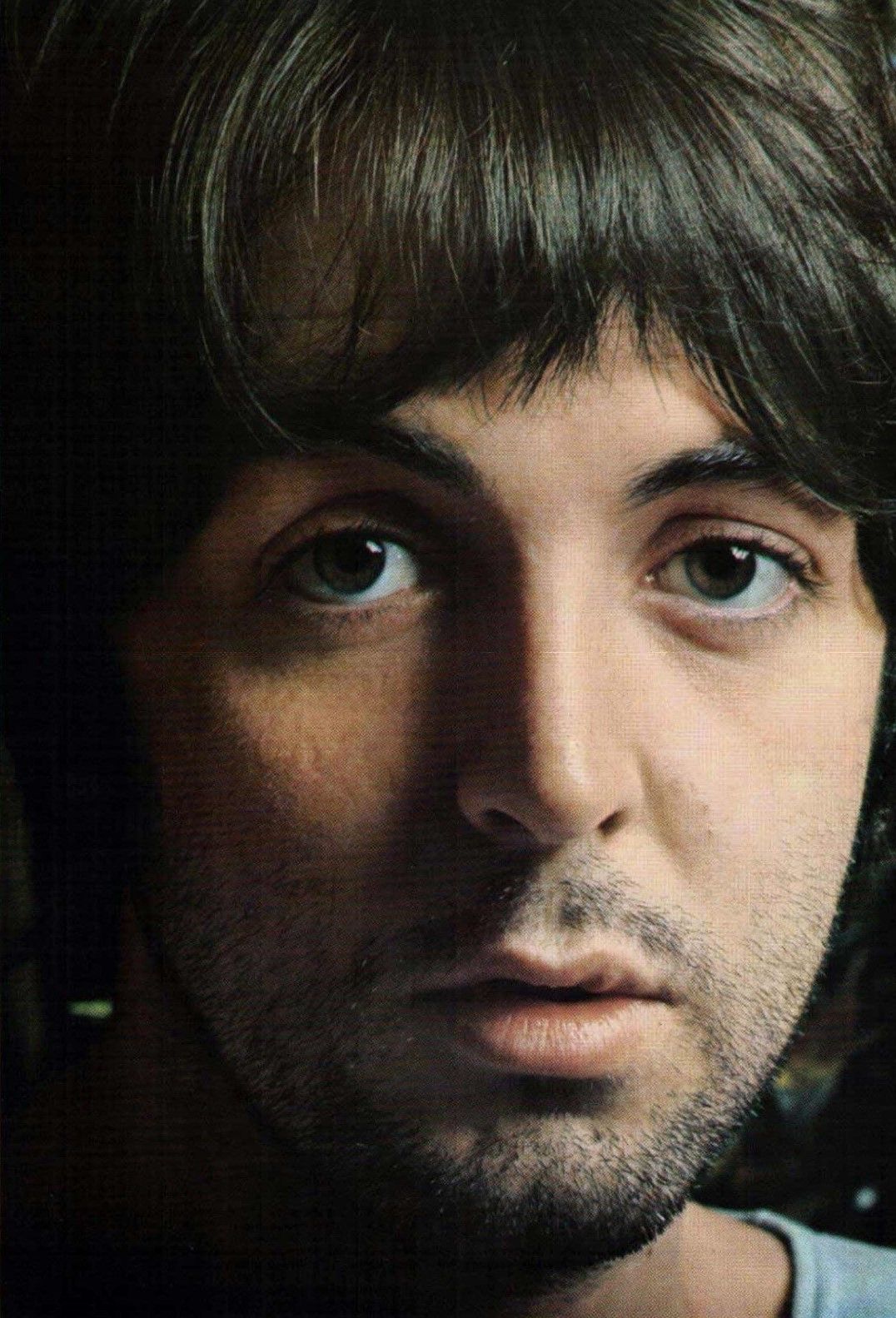 It is surprising, then, that with only a week and a half left before the deadline arrived, Paul churned out a newly written composition of such caliber as “Martha My Dear” that would be perfected in two recording sessions, orchestral arrangement and all. It wasn't thrown together haphazardly as filler material just because a song was needed to complete the album. In fact, they had plenty of material for this double-album, two fully recorded songs even being left off the album at the last minute (these being “Not Guilty” and “What's The New Mary Jane”). Instead we witness Paul McCartney acting on true inspiration and forging ahead, just under the wire, with a song that has become an essential ingredient on this amazing album. When you've got it, you've got it! It is surprising, then, that with only a week and a half left before the deadline arrived, Paul churned out a newly written composition of such caliber as “Martha My Dear” that would be perfected in two recording sessions, orchestral arrangement and all. It wasn't thrown together haphazardly as filler material just because a song was needed to complete the album. In fact, they had plenty of material for this double-album, two fully recorded songs even being left off the album at the last minute (these being “Not Guilty” and “What's The New Mary Jane”). Instead we witness Paul McCartney acting on true inspiration and forging ahead, just under the wire, with a song that has become an essential ingredient on this amazing album. When you've got it, you've got it!
Song Summary
“Martha My Dear”
Written by: John Lennon / Paul McCartney
- Song Written: October, 1968
- Song Recorded: October 4 & 5, 1968
- First US Release Date: November 25, 1968
- First US Album Release: Apple #SWBO-101 “The Beatles”
- US Single Release: n/a
- Highest Chart Position: n/a
- British Album Release: Apple #PCS 7067-7068 “The Beatles”
- Length: 2:28
- Key: E-flat major
- Producer: George Martin
- Engineer: Barry Sheffield
Instrumentation (most likely):
- Paul McCartney - Lead Vocals, Piano (Bechstein Grand #44064), Bass (1964 Rickenbacker 4001 S), Rhythm Guitar (1964 Fender Esquire), handclaps
- George Harrison - Rhythm Guitar (1957 Gibson Les Paul)
- Ringo Starr - Drums (1964 Ludwig Super Classic black Oyster Pearl)
- Bernard Miller - violin
- Dennis McConnell - violin
- Lou Sofier - violin
- Les Maddox - violin
- Leo Birnbaum - viola
- Henry Myerscough - viola
- Reginald Kilbey - cello
- Frederick Alexander - cello
- Leon Calvert - trumpet, flugelhorn
- Stanley Reynolds - trumpet
- Ronnie Hughes - trumpet
- Tony Tunstall - french horn
- Ted Barker - trombone
- Alf Reece - tuba
Written and compiled by Dave Rybaczewski
|
IF YOU WOULD LIKE TO MAKE A DONATION TO KEEP THIS WEBSITE UP AND RUNNING, PLEASE CLICK BELOW!
Sign Up Below for our MONTHLY BEATLES TRIVIA QUIZ!
|